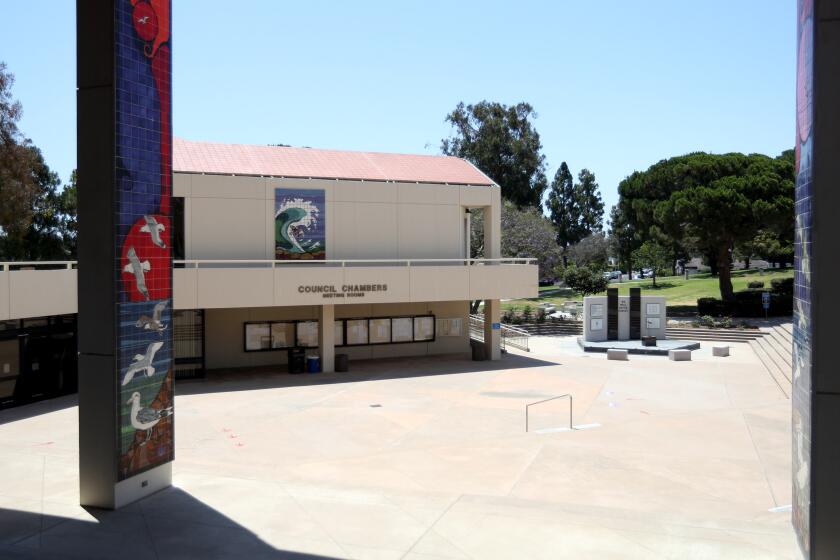Earthquakes pose extra threat to hospital
- Share via
Mathis Winkler
NEWPORT BEACH -- The Newport-Inglewood fault better not act up any
time soon.
Ten of Hoag Hospital’s 27 buildings would “pose a significant risk of
collapse and danger to the public after a strong earthquake,” according
to a state report released this week.
Hoag by far exceeds any other Orange County hospital in its number of
buildings and it tops the list in terms of the amount of buildings rated
as unsafe.
But hospital officials said Thursday that the Office of Statewide
Health Planning and Development had done the public a disservice by
releasing the data the way it did.
“If [a building] is not a pure, rectangular box, it automatically puts
you in [the unsafe category],” said Pete Foulke, an executive vice
president with the hospital.
The data “is not really reflective of what is the status of any given
building,” Foulke said, adding that Hoag’s architects and structural
engineers had assured him that most of the 10 buildings would not be in
danger of collapsing. Following the state’s directions, hospitals
submitted the rankings themselves.
Hoag’s 1974 nursing tower is included in the list of buildings that
don’t comply with the law. Newer structures, such as the cancer center,
fulfill the law’s requirements but could “not be repairable or
functional” after a major earthquake, according to the state.
The hospital’s emergency room, radiology waiting room, power plant and
emergency generators are likely to stay up and running after an
earthquake, Foulke said.
The definition of a major earthquake is different for every hospital,
depending on the ground it stands on, as well as the proximity to a
fault. Foulke said that he didn’t know Hoag’s earthquake definition, but
state officials have given a Richter Scale reading of 6.0 to 6.9 as a
ballpark figure. Hoag sits extremely close to the Newport-Inglewood fault
line, which drops into the ocean at Newport Bay.
State law requires that hospital officials fix the problems by 2008 or
remove the buildings from acute care service.
While hospital construction in California has been regulated since
1973, the 1994 Northridge earthquake provoked legislation requiring
hospitals to be virtually earthquake resistant by 2030.
Foulke said Hoag will spend about $30 million to retrofit buildings
with shock absorbers, which bring irregularly-shaped buildings in
compliance with the law.
The money will also pay for work on the hospital’s nonstructural
features, which need to fulfill the state’s earthquake safety
requirements by 2002. Hospital officials said they’ll have that work
completed by the end of the year.
While the new law didn’t bring about Hoag’s $100-million Women’s
Pavilion project -- a new hospital tower expected to open in 2004 -- the
latest earthquake safety regulations shaped the design of the building,
officials said.
The seven-story tower will also allow hospital officials to move
patient care units from noncompliance buildings and use those for
offices, Foulke said.
Hoag’s building ratings
Nonrated buildings are not used for patient care and therefore do not
have to follow the same regulations.
* Structural ratings -- this covers buildings:
Not rated: 8
Unsafe: 10 Comply with law, but may no longer be functional after an earthquake:
5
Comply with law, but may need repairs after an earthquake: 2
Comply with law and likely to stay open following an earthquake: 2
* Nonstructural ratings -- this covers communications, emergency
supplies, bulk medical gas, fire alarms and emergency lighting.
Not rated: 8
Work needs to be done to anchor and brace nonstructural features by
2002: 19
All the latest on Orange County from Orange County.
Get our free TimesOC newsletter.
You may occasionally receive promotional content from the Daily Pilot.








